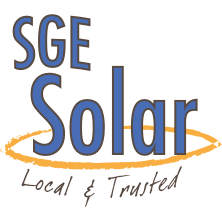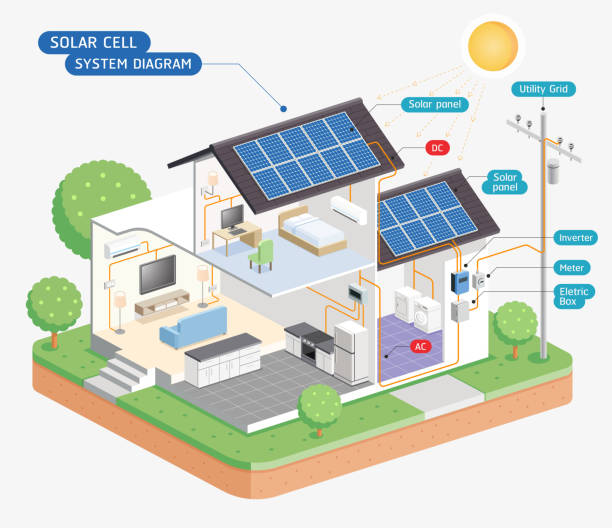In a grid-tied system, solar modules convert the sun’s energy to DC (direct current) electricity. An inverter converts the DC electricity to household AC (alternating current) electricity. The AC electricity is then fed into the electrical system of the building. That AC electricity is either immediately consumed or exported to the grid to be stored for future use.
At the heart of solar power systems lie solar panels, which capture sunlight and convert it into electricity. However, the journey from sunlight to usable electricity involves several crucial components, including AC and DC power inverters.
Solar Panels: Capturing Sunlight and Generating DC Electricity Solar panels, comprised of photovoltaic (PV) cells, are the primary components responsible for converting sunlight into electricity. When sunlight strikes these cells, they initiate a process called the photovoltaic effect, where photons in sunlight dislodge electrons from atoms within the PV cells, generating an electric current. This current produced by solar panels is in direct current (DC) form, characterized by a unidirectional flow of electrical charge.
DC Power Inverters: Converting DC Electricity to AC While solar panels produce DC electricity, most household appliances and the electricity grid operate on alternating current (AC). Therefore, to make the electricity generated by solar panels compatible with household appliances and grid infrastructure, DC power inverters play a crucial role. DC power inverters convert the DC electricity generated by solar panels into AC electricity.
Types of DC Power Inverters: There are several types of DC power inverters used in solar energy systems, each with its specific applications:
- String Inverters: These are the most common type of inverters used in residential and commercial solar installations. They are cost-effective and suitable for systems with uniform shading and orientation.
- Microinverters: Microinverters are installed on each solar panel, converting DC electricity to AC at the panel level. They offer advantages such as increased energy harvest, and better performance in partial shading conditions.
- Power Optimizers: Power optimizers are similar to microinverters in that they are installed at the panel level. However, instead of converting DC to AC, they optimize the DC electricity produced by each panel before it reaches the central inverter, maximizing energy output and mitigating the effects of shading.
AC Power Inverters: Connecting Solar Power to the Grid Once the DC electricity is converted to AC by the DC power inverter, it is ready for use within the premises or can be exported to the grid. AC power inverters, also known as grid-tie inverters, synchronize the AC electricity produced by solar panels with the grid’s frequency and voltage. They ensure that solar-generated electricity seamlessly integrates with the existing electrical infrastructure.
Solar energy systems are intricate ecosystems comprising various components working in harmony to harness sunlight and convert it into usable electricity.


